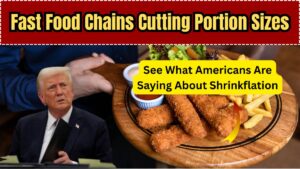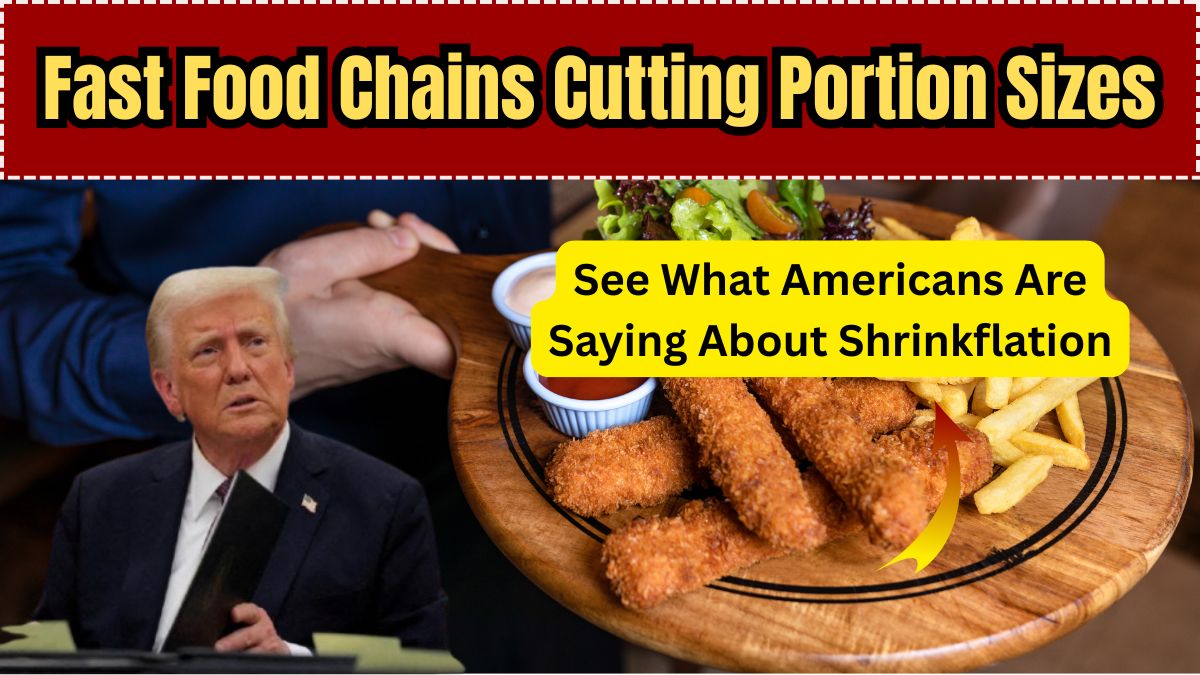Shrinkflation—the practice of reducing product size while maintaining or increasing prices—has officially hit fast food in 2025, and consumers across the United States are taking notice. From McDonald’s to Taco Bell, major fast food chains are downsizing portions of fries, burgers, drinks, and combo meals, all while prices either remain the same or go up slightly. This subtle shift in quantity without a direct change in presentation is frustrating customers and raising broader concerns about food pricing transparency.
This article explores how shrinkflation in fast food is playing out in the U.S., which chains are most affected, how consumers are responding, and what it all means for your wallet in 2025.

What Is Shrinkflation in Fast Food?
Shrinkflation is a term combining “shrink” and “inflation.” It refers to the practice of reducing the size or quantity of a product while keeping the price the same—effectively raising the per-unit cost.
In fast food, this could mean:
-
Smaller fries or drinks in combo meals
-
Fewer chicken nuggets in a standard order
-
Thinner burger patties or reduced toppings
-
Downsized burritos or wraps
Unlike traditional inflation, where prices visibly increase, shrinkflation can be harder to detect, especially if portion changes are gradual or not advertised.
Fast Food Chains Accused of Shrinkflation in 2025
Many major chains in the U.S. have reportedly reduced portion sizes as ingredient and labor costs have risen in 2025. Below are some of the most cited examples.
McDonald’s
Customers have noted that medium fries now resemble old small sizes, and burgers appear thinner. McDonald’s has not officially confirmed shrinkflation but cites increased operating costs and “menu optimizations.”
Taco Bell
Regular burritos and tacos are now smaller in width and less filled than they were just a year ago. Taco Bell has introduced new “value-sized” items with unclear differences from standard ones.
Burger King
Multiple patrons have reported that Whoppers seem smaller and onion rings have fewer pieces in standard orders. A new line of “budget combos” appears to mirror previous portion sizes at higher prices.
Chick-fil-A
Chick-fil-A has reportedly cut the size of chicken strips and nuggets, with boxes appearing lighter while maintaining the same price.
Wendy’s and KFC
Both have also been criticized for reducing drink cup sizes and sandwich weights while advertising “menu revamps.”
Why Is Shrinkflation Happening in Fast Food?
There are several economic and business factors driving shrinkflation in the industry:
-
Rising ingredient costs: Beef, chicken, and vegetable prices have surged in 2025 due to supply chain challenges and weather-related crop failures.
-
Labor shortages: Higher wages and training costs have driven up restaurant expenses.
-
Profit preservation: Rather than raise prices and scare off customers, brands are opting for subtle portion cuts.
-
Menu redesigns: Some chains are updating menus to “streamline” items, quietly introducing smaller standard sizes.
The net effect is customers getting less value for the same (or more) money.
Consumer Reactions and Social Media Buzz
Shrinkflation hasn’t gone unnoticed. Consumers have taken to platforms like TikTok, X (formerly Twitter), and Reddit to share before-and-after photos of meals, express outrage, and call for transparency.
Common reactions include:
-
“My meal used to fill me up. Now it just annoys me.”
-
“This isn’t a value meal anymore—it’s just a small meal at a premium price.”
-
“They think we won’t notice. We did.”
Hashtags like #Shrinkflation, #FastFoodScam, and #TinyMeals2025 have gone viral multiple times this year.
What Can Consumers Do?
While you can’t reverse shrinkflation, there are some strategies to get better value:
-
Order à la carte instead of combo meals to customize quantity and value.
-
Check prices per ounce or item if nutritional info is available online.
-
Choose chains with loyalty programs that offer points or bonus items.
-
Share larger-sized items (e.g., family meals) to improve cost per portion.
-
Cook at home or opt for meal kits where you have more control over portions and prices.
Fast food was once synonymous with affordability and value. In 2025, that reputation is being challenged.
FAQs
What is shrinkflation in fast food?
Shrinkflation refers to reducing portion sizes while keeping the price the same, effectively making the product more expensive per unit.
Which fast food chains have reduced their portions in 2025?
Reports indicate chains like McDonald’s, Taco Bell, Chick-fil-A, Wendy’s, and Burger King have all downsized some menu items in 2025.
Why are fast food portions shrinking?
Fast food companies are facing rising costs for ingredients and labor. To avoid raising menu prices visibly, they reduce portion sizes instead.
How can I avoid paying more for less when eating out?
You can compare items, use loyalty programs, skip combo deals, and look for value in shared or family-sized meals.
Is shrinkflation legal?
Yes, shrinkflation is legal as long as nutritional and weight information is disclosed. However, many consumers feel misled if changes are not clearly communicated.
Click here to know more.
